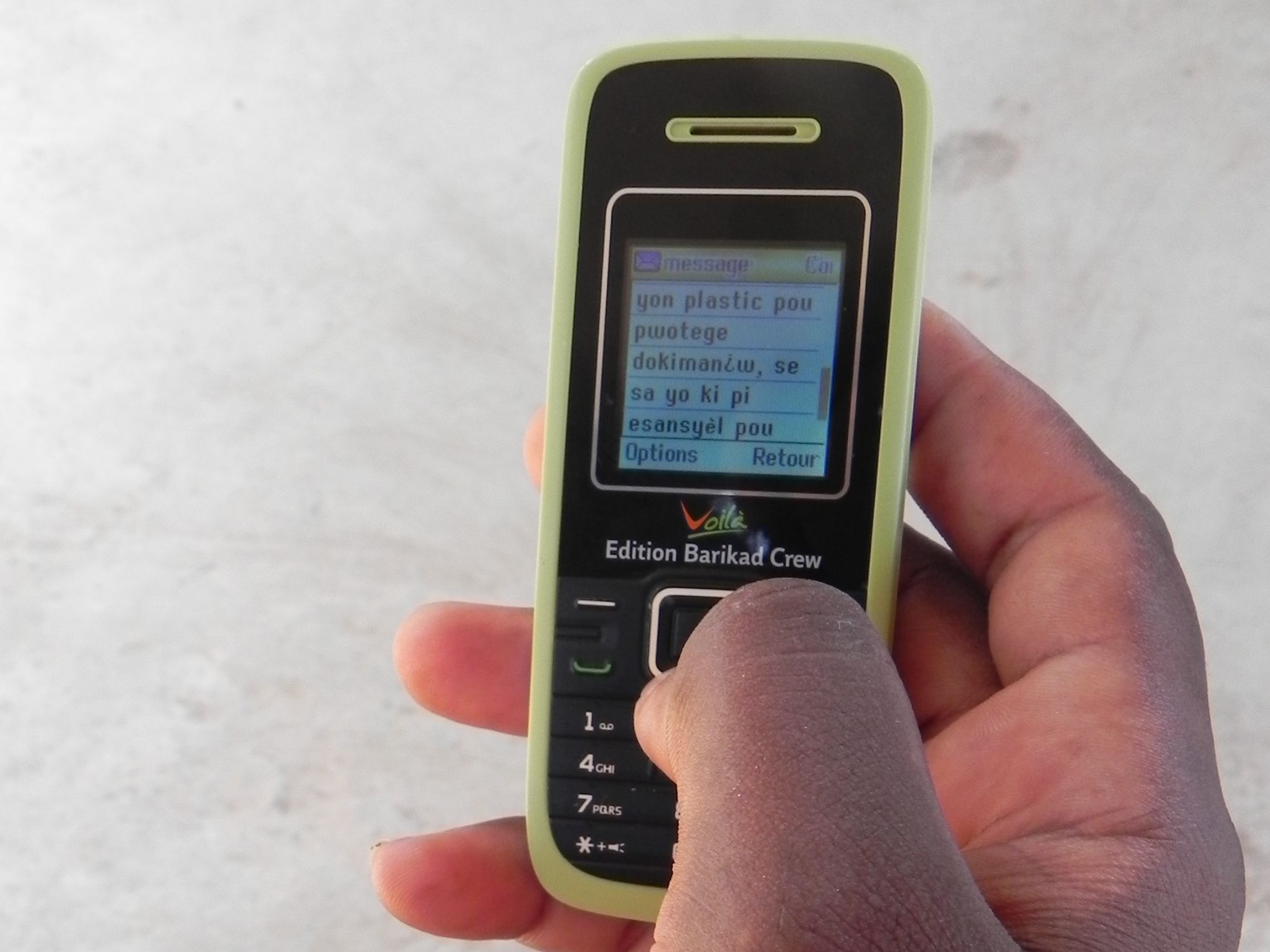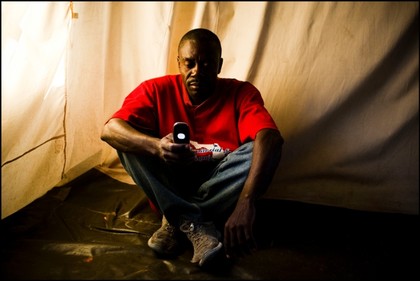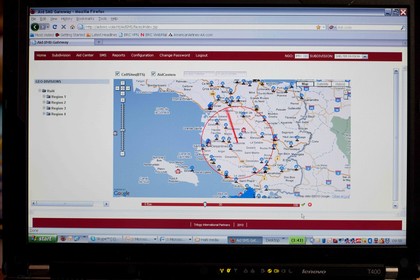Two years on: Haiti's tech legacy
How Haiti's quake led to new ideas in disaster relief

Today is the second anniversary of the 7.0 magnitude earthquake which devastated Haiti, killing up to 316,000 people and making millions more homeless.
Because the epicentre of the quake was just 16 miles outside the densely populated capital Port-au-Prince, damage to buildings and infrastructure was on such a massive scale that up to two million still live in temporary camps. In the last 24 months, they've faced off hurricanes and cholera.
While debates rage on about the best way to clear up the quake and continue to care for survivors - and there are plenty of controversies involving misappropriated funds and inappropriate volunteer responses - one thing that Haiti will be noted for is the response of the tech community to the disaster.
It would be wrong to overplay the impact high tech solutions had, and a report published last year (Lessons from Haiti: Media, Information System and Communities) cautions against just this. But Haiti was a proving ground for new, IT inspired ideas in disaster relief. Partly this is because of its geography (Haiti lies just 700 miles off of the Miami coast) and partly it's because of the timing, just as the mobile phone was becoming ubiquitous.
What's interesting is to look at the ideas born in the immediate response which have matured properly today.
Some of the technologies which came to prominence in Haiti already existed. The disaster was the first time many people came across Ushahidi, the crowd mapping platform, for example. In the immediate aftermath, it was used to map SMS requests for help from survivors. These co-ordinated with reports from other sources by volunteers at Tufts University to help direct emergency services.

IN TOUCH: SMS is the technology of choice for reaching Haitians still living in temporary camps
Get daily insight, inspiration and deals in your inbox
Sign up for breaking news, reviews, opinion, top tech deals, and more.
Other resources, like Google's People Finder, which enables survivors of natural disasters to reconnect with families via a simple web portal, were developed specifically to help people in Haiti. People Finder has since been used following floods in Pakistan and last year's earthquake in Japan.
Other stories of successful tech include Crowdflower, an online labour exchange which helped to mobilise teams of volunteers who could translate text messages from Haitian Creole into other languages for international rescue workers, and Ushahidi. Or Konbit, an MIT project which is designed to help Haitians find work via text messages in the rebuilding projects.
Then there's CrisisCommons, which organises volunteers in local groups who can offer help and problem solving advice via the internet to disaster zones.
Even Twitter gets a look in. A report published this week in The American Journal of Tropical Medicine and Hygiene found that the social networking tool accurately tracked the path of the cholera outbreak that swept the country in late 2010.
Early warning
Of all these projects, however, one of the most ambitious, successful and least written about is TERA, the Trilogy Emergency Relief Application. Developed by the Trilogy International Partners - the parent company of Haitian mobile operator Voila - and the International Federation of Red Cross and Red Crescent Societies (IFRC), TERA was put together in the first week of the emergency response, but it's hoped that it will evolve into a universal warning system for natural disasters in a global scale.
The principle behind TERA is simple: using a laptop and web interface, IFRC operators can send out blanket SMS alerts to people to warn them of impending problems or keep them informed during crisis clean-up.
TERA has been used, for example, to alert people living in the massive temporary camps of when drinking water supplies are available, to distributing information about sanitation during the cholera crisis that followed the earthquake.

ALERTED: Texts can be sent to all network subscribers within precise geographic areas
Sharon Reader is the beneficiary communications delegate from the IFRC who looks after TERA in Haiti.
"What's unusual is that usually tech companies will go away and create things for use in the field without really speaking to the humanitarian agencies," Reader explains. "So while it's a fantastic package, it may not always be that useful for us. What's unique here is that the two sides sat down and have developed this together, and it's being constantly improved based on our feedback."
There are other SMS alert systems deployed in disaster relief scenarios, most notably one called Frontline SMS. Two things differentiate TERA, however.
The first is that because it's been developed in partnership with the operator, TERA is an opt-out rather than opt-in system. To receive alerts using other technologies, cellphone subscribers must first send an SMS to a shortcode to activate their account. With TERA, the IFRC can blanket message all Voila subscribers regardless of whether they've opted in or not, giving them a far wider reach.
The second - and arguably more interesting - facet is that TERA is geographically aware. Mobile phone owners in very specific areas can be targeted with messaging, rather than right across the network, an ability that proved itself useful in slowing the spread of cholera through specific communities.
"Basically I have a little map of Haiti," says Reader, "and I can see every single cell site that Voila has on the island. I can click on any tower and say - for example - I want to SMS everyone who's used that tower in the last 15 minutes.
"You can also pick any point on a map now and message everyone within 100Km of that point. So if we know there's going to be flooding or a storm surge, it's a two minute task to send out a mass warning to those who might be affected."
Proven tech
TERA has proved itself over and again in Haiti. By linking the text message to a free automated helpline, using the shortcode dialling option *733, the IFRC has had huge response to its awareness campaigns.
More 300,000 people tried to get through to a cholera information line after receiving the text, and an amazing 36,000 women in Port-au-Prince responded to a text offering information about dealing with rape.
While TERA has proved itself time and time again in Haiti, reaching an estimated 1.2 million people with important information, it's not yet been deployed more widely. It had been hoped, for example, that TERA could be used in Pakistan following the flooding there last year, but negotiations with local network operators proved tricky.
If it can be agreed, Reader believes that installing TERA onto a new network is less than a week's work.
The IFRC hopes that one day, TERA will be installed on every network, and accessible from its Geneva HQ which is in 24 hours contact with weather centres and seismic monitoring stations around the globe.
"For the first time," says Reader, optimistically, "we'd be one step ahead of disasters happening, rather than always one step behind."